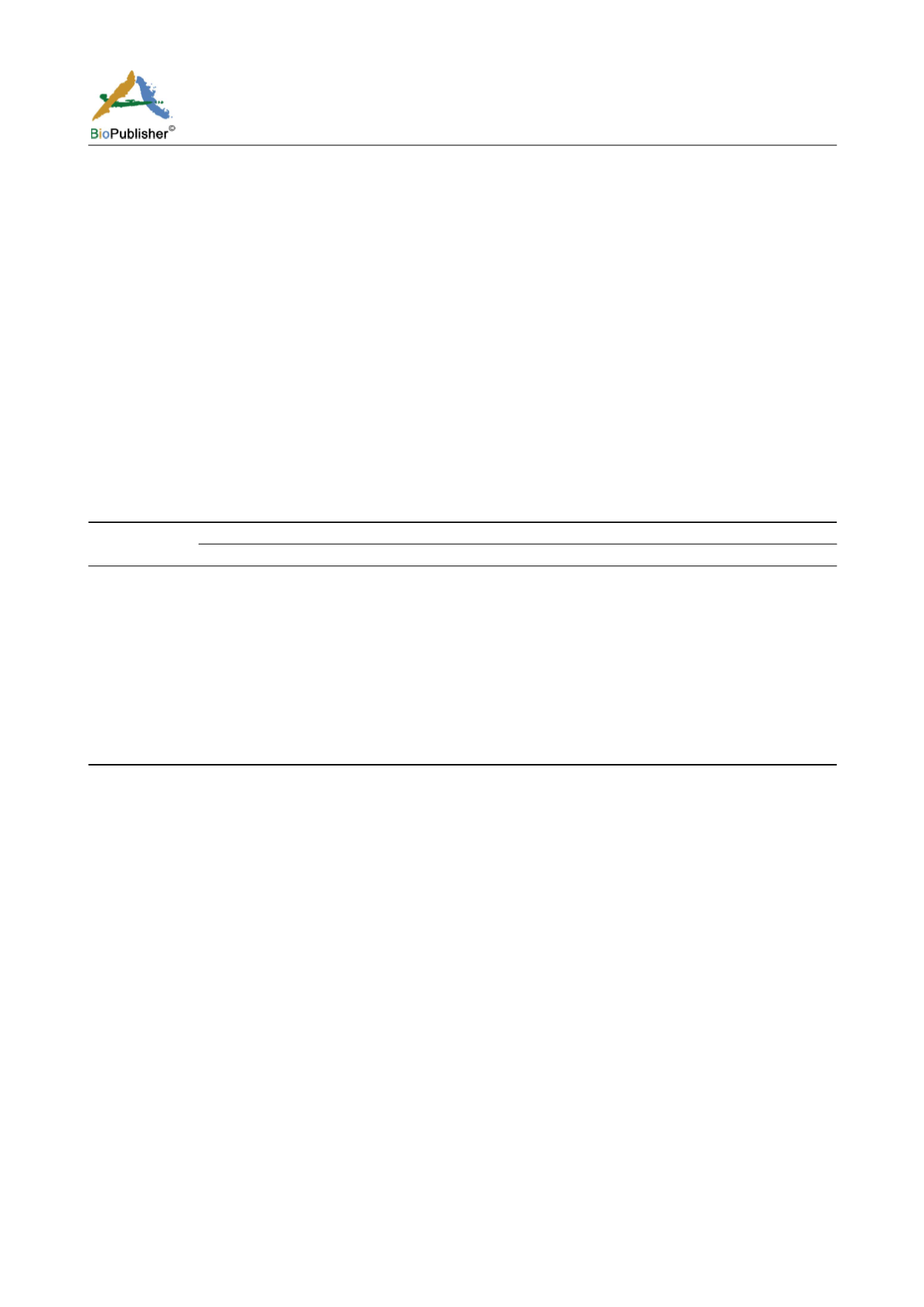
International Journal of Marine Science, 2017, Vol.7, No.12, 102-113
105
al. (1982); John and Yonge (1977); Belaluzzaman (1995); Hossain (1983) and Barua (1983).
1.6 Statistical analysis
One Way Analysis of Variance (ANOVA) with Post-hoc LSD test was done to test the influence of
physic-chemical variables in the distribution of benthos (SPSS v.22). Canonical Correspondence Analysis (CCA)
was done to find the ecological relationship between physico-chemical parameters and benthos
community for both seasons (using PAST v.3.1). Cluster analysis (Dendrogram) was performed to show the
similarity among the sites based on abundance taxa (using PRIMER v.6). Shannon-Wiener’s diversity of benthos
was also determined (using PRIMER v.6).
2 Results
2.1 Physico-chemical parameters of surface and subsurface water
The depth of the sampling sites ranged from 4 to 13 m (Table 3). The air temperature varied 25.5 to 33°C in
monsoon and 23 to 29°C in post-monsoon; The surface water temperature recorded 28 to 31°C in monsoon and 21
to 23°C in post-monsoon; and subsurface water temperature remained 28 to 29.5°C in monsoon and 21 to 22°C in
post-monsoon.
Table 3 Physico-chemical parameters of bottom soil in the study area
Parameters/ Site Sandwip
Hatiya
Bhola
Barisal
Chandpur
M PM M PM M PM M PM M PM
Bottom depth (m) 6
5
10
5
13
7
4
4
12
8
pH (
in situ
)
6.5 7.2
6.7
6.9
7.1
7
7.2
6.8
7
7
pH (soil extracted 6.8 6.8
6.5
6.4
6.7
6.6
7.1
6.2
6.5
6.4
Sand (%)
38.08 57.12 78.08
62.08
79.48
81.36
45.72
40.88 58.08 66.08
Silt (%)
36.8 16.36 0.8
16.96
1.28
0.6
30.56
36.6 28.96 16.96
Clay (%)
25.12 26.52 21.12
20.96
19.24
18.04
23.72
22.52 12.96 16.96
Soil Texture
Clay Sandy Sandy Sandy Sandy Sandy Loam Loam Sandy Sandy
Organic Carbon 0.83 0.41
0.19
0.45
0.1
0.61
0.14
0.21 0.06 0.41
Organic Matter 1.43 0.71
0.33
0.77
0.16
1.04
0.25
0.36 0.11 0.71
Note: M= Monsoon; PM= Post-monsoon
During monsoon, 1‰ salinity was recorded only at Sandwip, while at all other sites salinity was almost zero.
Whereas in post-monsoon water salinity was 15‰ at Sandwip and 8‰ at Hatiya (Table 1) and other sites it was
recorded zero.
The secchi depth of surface water was lowest at Sandwip and gradually increased towards upstream sites and was
recorded maximum at Chandpur during the both seasons. The lowest secchi depth was recorded as Sandwip (4 cm)
and highest was at Chandpur (55 cm) during monsoon. On the other hand it was lowest at Sandwip (35 cm) and
highest at Chandpur (60 cm) during post-monsoon season. Between the seasons the Total Suspended Solids (TSS)
and Total Organic Matter (TOM) were more in both surface and subsurface water during monsoon than that of
post-monsoon season. During monsoon maximum and minimum TSS were recorded 10.83 mg/L and 0.31 mg/L at
Sandwip and Chandpur respectively. Whereas in post-monsoon TSS was maximum 1.34 mg/L at Hatiya and
minimum 0.30 mg/L at Sandwip. The TOM was recorded most was 0.86 mg/L at Sandwip and lowest 0.48 mg/L
at Chandpur during monsoon; on the other hand it recorded highest 0.64 mg/L at Sandwip and lowest 0.54 mg/L at
Bhola during post-monsoon.
In the present study the surface water pH was slight acidic during monsoon whereas it was almost neutral in
post-monsoon. It was also observed that the subsurface water pH was slightly more than that of surface water. The
Dissolved Oxygen (DO) concentration was comparatively more during monsoon than post-monsoon at all sites.
Again DO was more in sub-surface than surface water in most sites. The Biological Oxygen Demand (BOD) was
recorded more during monsoon than post monsoon at all sites. Again subsurface BOD was relatively more than


